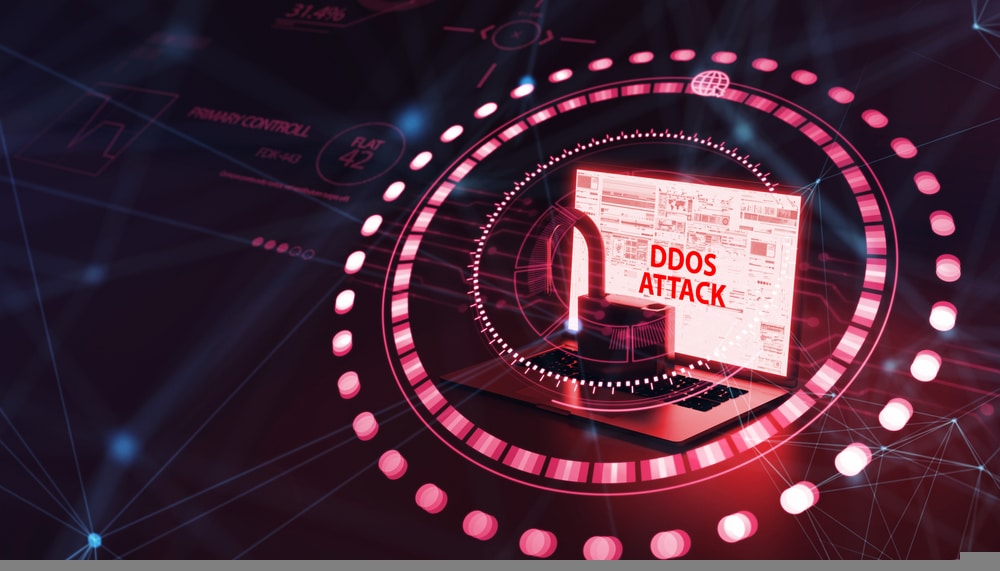- Unpack the complexities of DoS and DDoS attacks to safeguard digital assets better.
- Discover strategies and measures to reinforce cybersecurity and mitigate the impact of attacks.
- Stay informed about the latest trends and legal developments in the battle against cyber threats.
Table of Contents:
- Introduction to DoS and DDoS Attacks
- Understanding DDoS: The Magnified Threat
- How DoS Attacks Work
- Targets and Motivations Behind the Attacks
- Defending Against DoS and DDoS Attacks
- The Role of Cybersecurity Infrastructure
- Legal Implications and Global Cyber Laws
- Economic Impact of DoS and DDoS Attacks
- The Future of DoS and DDoS Attacks
- Resources and Further Reading
Introduction to DoS and DDoS Attacks
Cybersecurity has become a cornerstone of modernity as the world marches more deeply into the digital age. Organizations and individuals alike must understand cyber threats like DoS and DDoS attacks—two formidable tactics often used by perpetrators to undermine digital operations. At its core, a Denial of Service (DoS) attack aims to make a machine or network resource unavailable to intended users by temporarily interrupting or suspending the services of a host connected to the internet. When such attacks are magnified to include multiple compromised systems targeting a single essential service, they evolve into Distributed Denial of Service (DDoS). The malicious intent is the same, but the scale and impact can differ enormously. This concept is thoroughly analyzed and explained in resources such as the comprehensive article on DoS versus DDoS, which details the functioning and differentiation between these types of digital aggression.
The adverse effects of these attacks are far-reaching, impacting not just the immediate target but also rippling out to affect countless users. Companies might experience substantial financial losses, and individuals could be locked out from essential services, underscoring the urgent need for widespread understanding and preventative measures.
Understanding DDoS: The Magnified Threat
When comparing DOS versus DDOS attacks, the severity of the assault escalates as numerous compromised systems, including computers and various networked resources like IoT devices, are employed to assail a single system. The assailant initiates the attack by exploiting vulnerable systems and converting them into bots or zombies. This distinction highlights the difference between DoS and DDoS attacks. These bots are then remotely manipulated to launch a synchronized attack, resulting in an orchestra of chaos aimed at one target. Often, these attacks aim to exhaust the target’s bandwidth, overload web servers, or disrupt services. By utilizing many devices, attackers ensure that pinpointing the attack’s origin is exceedingly complex. The strategy is cunning: a solitary attacker quietly assembles a digital army to amplify their reach and impact without knowing the devices’ rightful owners.
The effectiveness of these attacks, combined with their often ambiguous origin, makes them particularly dangerous and challenging for institutions to combat. This difficulty fosters an environment where learning and staying abreast of the latest protective measures is imperative for the continued operation of internet-reliant services.
How DoS Attacks Work
The technical underpinnings of DoS attacks are diverse and complex. Generally, they are executed by flooding a target with excessive communication requests, which overloads systems, prevents legitimate requests from being fulfilled, and ultimately disrupts service operations. An attacker might exploit a vulnerability within the network stack to monopolize resources and services, disrupting the infrastructure’s ability to function correctly. Techniques like buffer overflow attacks, ICMP flood, and SYN flood are commonly wielded tools in the attacker’s arsenal aiming to exploit the limits of web servers and networks. While a robust infrastructure can often manage the usual traffic fluctuations, the magnitude and sophistication of a DoS assault can overpower even the most secure environments. Studying case studies of notable DoS incidents illuminates the evolution of attack strategies and can better prepare organizations to ward off future threats.
Legendary across IT departments are tales of system downtimes and disrupted services, depicting the chaos a DoS attack can create. These stories serve as warnings and educational narratives to sculpt better defensive strategies.
Targets and Motivations Behind the Attacks
Targets of DoS and DDoS attacks can be as varied as the motivations behind them. While some attackers aim to cripple infrastructures for financial gain through ransom or for disruptive notoriety, others may do so to make ideological statements or protest by taking websites offline — a digital sit-in of the 21st century. Not all attacks are externally motivated; some stem from internal sources, such as disgruntled employees seeking to sabotage their employers. Regardless of the source, the end goal is disruption, and the collateral damage can be all-encompassing.
Public and private sectors have recorded significant incursions, some intending to destabilize a nation’s security, economy, or public confidence. Examples exist in all forms, from large-scale attacks on financial institutions causing millions in losses to smaller, still harmful strikes on local businesses impacting their ability to operate and serve customers.
Defending Against DoS and DDoS Attacks
Defending against DoS and DDoS requires a systematic and layered approach. Vigilance and preparedness form the first line of defense. This includes employing frontline deterrents such as firewalls and intrusion detection systems. But beyond these measures, organizations must also configure their network architecture with redundancy and resilient communications channels that can absorb and disperse the flood of illegitimate traffic.
A responsive and agile action plan is crucial when an attack is launched. Strategies include identifying and segregating malicious traffic, which can be accomplished through IP blocklisting or rate-limiting inundating requests. By rapidly deploying these reactive measures, teams trained to handle these scenarios can significantly reduce the potential damage. Implementing a comprehensive response plan cannot be overstated; such a document covers the technical response and communication strategies to liaise with customers, law enforcement, and other stakeholders during and after an attack.
The Role of Cybersecurity Infrastructure
The construction of a robust cybersecurity infrastructure acts as the backbone for resisting both DoS and DDoS attacks. Putting in place advanced defenses, regular system maintenance, and a culture of security awareness are essential practices for businesses. Specialized DDoS mitigation tools and services now exist to provide real-time analysis and immediate response to reduce the impact of these intrusive attempts on services.
As technology evolves, so must the cybersecurity measures that protect vital systems from these insidious attacks. Developments in machine learning and artificial intelligence (AI) have begun to shape a new defense landscape where systems can autonomously detect and respond to threats more efficiently. The technology’s role in solidifying networks against such crimes is reactive and proactive, steering the ongoing dialogue on cybersecurity.
Legal Implications and Global Cyber Laws
The ramifications of DoS and DDoS attacks extend beyond the digital realm into judiciary corridors, where these acts are increasingly recognized as severe crimes. However, the challenge with prosecuting these crimes is the internet’s borderless nature. Transnational cooperation is essential in developing and upholding laws that hold attackers accountable. This cooperative legal enforcement helps to inhibit the growth of such activities by increasing the likelihood of repercussions.
Cybercrime legislation is becoming more rigorous, with countries harmonizing their laws to aid in the timely capture and prosecution of cyber offenders. International legal bodies continuously work towards establishing deterrents and remedies that are applicable universally, enhancing the global response capability. Enforcement is critical, evidenced by global law enforcement agencies like Interpol coordinating international cybersecurity operations to effectively combat DDoS and other cyberattacks.
Economic Impact of DoS and DDoS Attacks
The economic aftermath of DoS and DDoS attacks can be devastating, with immediate costs relating to response, restitution, and future prevention racking up quickly. For affected businesses, the repercussions also resonate through their customer base, damaging trust and loyalty—a currency of inestimable value in today’s consumer market.
The impacts are also broader than the immediate financial setbacks. They hinder the progression of technological advancements and necessitate increased investments in cybersecurity defenses, indirectly hiking the cost for end-users. The effects are embedded in our digital economy, influencing risk assessments and business continuity planning across sectors.
The Future of DoS and DDoS Attacks
Peering into the cyber crystal ball, the future trajectory of DoS and DDoS attacks is steeped in sophistication and frequency. In this cat-and-mouse game, the defenders of cyberspace are constantly adapting to counter threats with newer, more advanced technologies. Preparing for tomorrow’s attacks means building adaptive systems and investing in research and development to stay ahead of cybercriminals’ evolving tactics.
Recognizing that the threat landscape will continue to shift, the cybersecurity community greatly emphasizes sharing information and best practices. Whether through large-scale cybersecurity conferences or digital platforms where industry leaders and professionals exchange insights, a collective commitment to progress in defeating these attacks secures a stronger digital future.
Resources and Further Reading
Finding the proper guidance for strengthening cybersecurity practices or learning more about DoS and DDoS attacks is paramount. Fortunately, there is a plethora of online resources available. From the blogs of renowned security firms to forums and seminars where experts congregate, resources are abundant for those seeking knowledge.
As informed and prepared networks hold the last electronic line of defense, continued investment in education and security consciousness will ultimately tilt the scales in favor of defenders over attackers. The collective effort to maintain a safe and secure online world is continuous and one that all digital citizens have a stake.





